Trailing arms are sometimes referred to as control arms, when in fact, they are a unique type of suspension system component.
Control arms connect the steering knuckle or the wheel flange to the frame via a bushing. The end of the control arm that’s attached to the frame must pivot to allow the axle or the steering knuckle to move up and down.
Meanwhile, trailing arms mount to the frame of the vehicle with bushings and extend to the axle housing or to a wheel knuckle. The trailing arms run parallel to the centerline of the vehicle’s chassis and support a driven or a non-driven axle against front-to-rear movement.
Trailing arms are essential for both the stability and ride comfort of the vehicle. While regular maintenance and inspection prolong their service lives, trailing arms, especially their bushings, are still susceptible to damage. Find out the causes and symptoms of bad trailing arms as well as bad trailing arm bushings with this guide.
What are the Signs of a Bad Trailing Arm?
Issues with the components of the suspension system may lead to a shaky ride and sometimes even control and steering problems. This is why it’s important to keep track of these parts, including the trailing arms. Bumping noises while driving and or suspension squeaking noises may occur depending on the design of the vehicle.
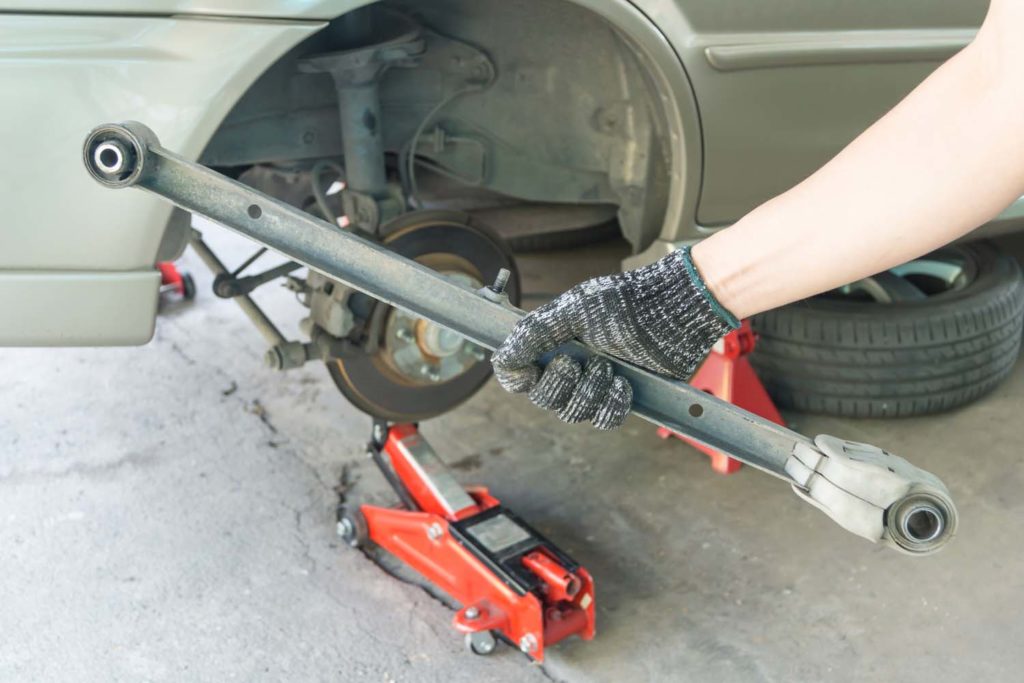
Unless it’s been damaged in a collision, the trailing arm itself does not require special attention. The trailing arm bushings, on the other hand, are a different story.
Bushings help reduce friction between two surfaces that rub against each other, so they are constantly under stress. This makes them even more susceptible to damage. Bushings connect the trailing arm to the frame and the axle housing/steering knuckle, so bad trailing arm bushings may cause surrounding components to fail but usually will become noisy before other components are damaged.
Monitoring the state of your trailing arm and trailing arm bushings can help you avoid uncomfortable—and maybe even dangerous—situations.
Listed below are some of the bad trailing arm symptoms that you need to familiarize yourself with:
Clunking from the rear axle
Bad trailing arm bushings may create an unusual clunking or thudding noise, especially when the vehicle is placed in drive or reverse. You may also observe these sounds when the vehicle is driving over bumps, accelerating, turning, or braking.
If the bushings are not replaced as soon as possible, the trailing arm itself may eventually get damaged.
Vehicle is unstable and won’t keep to a straight line
Damage to the trailing arm or its bushings can cause the rear axle of the vehicle to move independently of the vehicle’s chassis. This means that the rear end of the vehicle may sway to one side, especially when turning or hitting a road bump.
Also, if the driver is attempting to drive in a straight line, the rear wheels may change the direction of the vehicle entirely.
Excessive and uneven rear tire wear
If the rear axle moves out of its proper position due to a bad trailing arm or bushing, the vehicle may have to drag the rear tires as it moves, or the front tires may have to change direction. This changes the direction in which the rear axle is pointing and may cause the tires to wear on their new leading edge.

Vehicle is lower on one side
When trailing arm bushings are worn, they allow the rear springs to lift that side of the vehicle slightly higher. This changes the rear-end height of the vehicle to go up to about an inch.
What Causes Trailing Arm Failure?
As mentioned above, the trailing arm itself rarely fails, except when it sustains damage from a collision. The trailing arm bushings, which absorb noise, minor vibrations, and shocks, are more susceptible to damage due to several factors.
Extreme heat
Due to its location, trailing arm bushings are regularly exposed to extreme temperatures. High heat, in particular, can cause the rubber damping material of the bushings to crack and harden.
Excessive twisting
Twisting can also shorten the service life of bushings. If the bushings allow excessive roll on your vehicle, they may twist and eventually tear. This is particularly dangerous because the steering may not be as responsive and the driver may lose control of the vehicle entirely.
Fluid leaks
Lastly, fluid leaks may also cause the bushings to deteriorate and potentially fail.
When Should You Replace Your Trailing Arm?
Driving with damaged, bent, or cracked trailing arms is neither safe nor wise as it can lead to the separation of the rear axle(s). This may then cause further damage to surrounding components, which is why you should address trailing arm issues as soon as you spot the signs.
Depending on your situation, you may consider getting an entirely new unit instead of replacing just the bushings. Replacing the entire trailing arm may be the more cost-effective option as bushing replacement typically requires a heavy-duty hydraulic press and/or a torch, and these may not be accessible to the average DIYer.
Keep in mind that changing the ride height of your vehicle affects the angular position of the trailing arms, which can cause instability. If you’re planning on installing a new lift kit on your vehicle, you should also pay close attention to your trailing arms and replace or adjust them as necessary.
Vehicle-specific repair manuals and databases can help you locate and repair your faulty trailing arms and/or bushings. These are the perfect references because they contain detailed repair information, easy-to-understand illustrations, and diagrams.
However, if you’re not familiar with vehicle repair, you can always have a certified mechanic or technician do the job for you.
More About Trailing Arms
Trailing arms essentially prevent the wheel and hub assembly in a fixed position rather than allowing it to move back when it encounters resistance. Think of a trailing arm as a brace to provide the wheel axis with stability.
Some vehicles have what is typically called an “A frame”, which is hinged on rubber bushings at the frame (that’s the base of the “A”) and with the point of the “A” being out near the wheel where the ball joint is connected to the steering knuckle.
Strut suspension vehicles usually (not always) have only a lower A frame, with the strut assembly making the connection between the upper part of the steering knuckle and the car body or a frame boss.
The shape of the A frame provides stability so that a trailing arm isn’t typically required.
A trailing arm is typically connected to a lower control arm that is shaped more like an “I” than an “A” and thus needs extra support to keep the wheel axis fixed to the position of the frame when the vehicle hits rough areas (potholes, etc.). An unsupported “I” shaped lower control arm would bend backward without the support of the trailing arm.
Suspension parts that are hinged to allow suspension movement always have rubber bushings where they are attached to the vehicle frame or unibody. When those bushings begin to wear or break loose from the metal shells to which they’re bonded, or if the bolts are a bit loose, squeaking and thumping noises may happen during parking lot maneuvers, or when driving over bumps and such.
How Much is a Replacement Trailing Arm?
An aftermarket replacement trailing arm may cost you around $17 to $430. Prices are usually affected by a variety of factors.
Trailing arm replacements are typically sold individually or in sets of two or four units. Kits are also available and may include hardware and other components.
If you’re looking to replace your trailing arms, take note of how many units you need. You also need to make sure that the parts are compatible with your vehicle’s year, make, and model. This way, you can save time and effort during installation while avoiding the hassle of returning the wrong items.
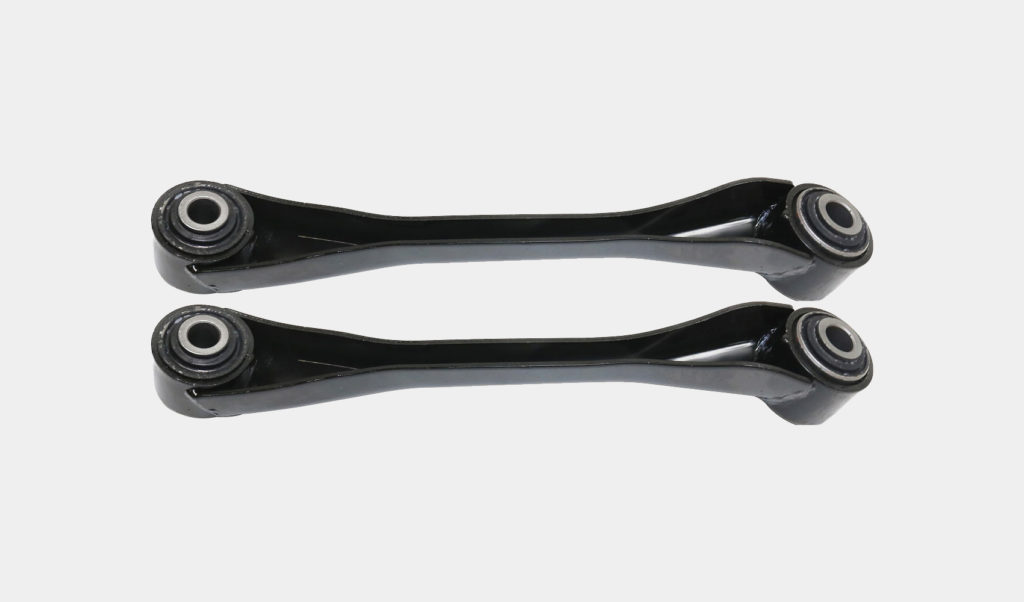
How to Find a New Trailing Arm
Don’t ignore a bad trailing arm, as it can cause your vehicle to shift unevenly and make it difficult to drive in a straight line. Both problems increase the risk of accidents. On the bright side, finding a replacement is easy with the help of CarParts.com.
You don’t even have to leave your house to get a hold of a replacement trailing arm. With your mobile phone, you can visit CarParts.com, find the perfect replacement, and check out in minutes.
Start by using our vehicle selector to narrow down the catalog to compatible parts. Then, use the filters to view the trailing arms that match your preferred brand, price range, material, design, and specs. If you have questions, our friendly customer support team is available 24/7 to assist you. Available at competitive prices, our trailing arms are on hand and ready to ship from strategically located warehouses across the US.
When it comes to your vehicle, playing it safe and getting replacement parts as soon as possible is always worth it. Check out our collection of high-quality trailing arms at CarParts.com.
Products Mentioned in this Guide
Any information provided on this Website is for informational purposes only and is not intended to replace consultation with a professional mechanic. The accuracy and timeliness of the information may change from the time of publication.


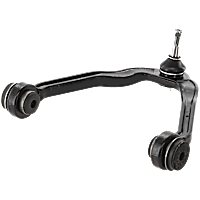 Contral Arm
Contral Arm
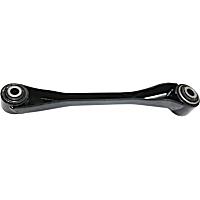 Trailing Arm
Trailing Arm
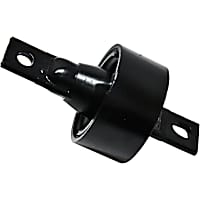 Trailing Arm Bushing
Trailing Arm Bushing




























